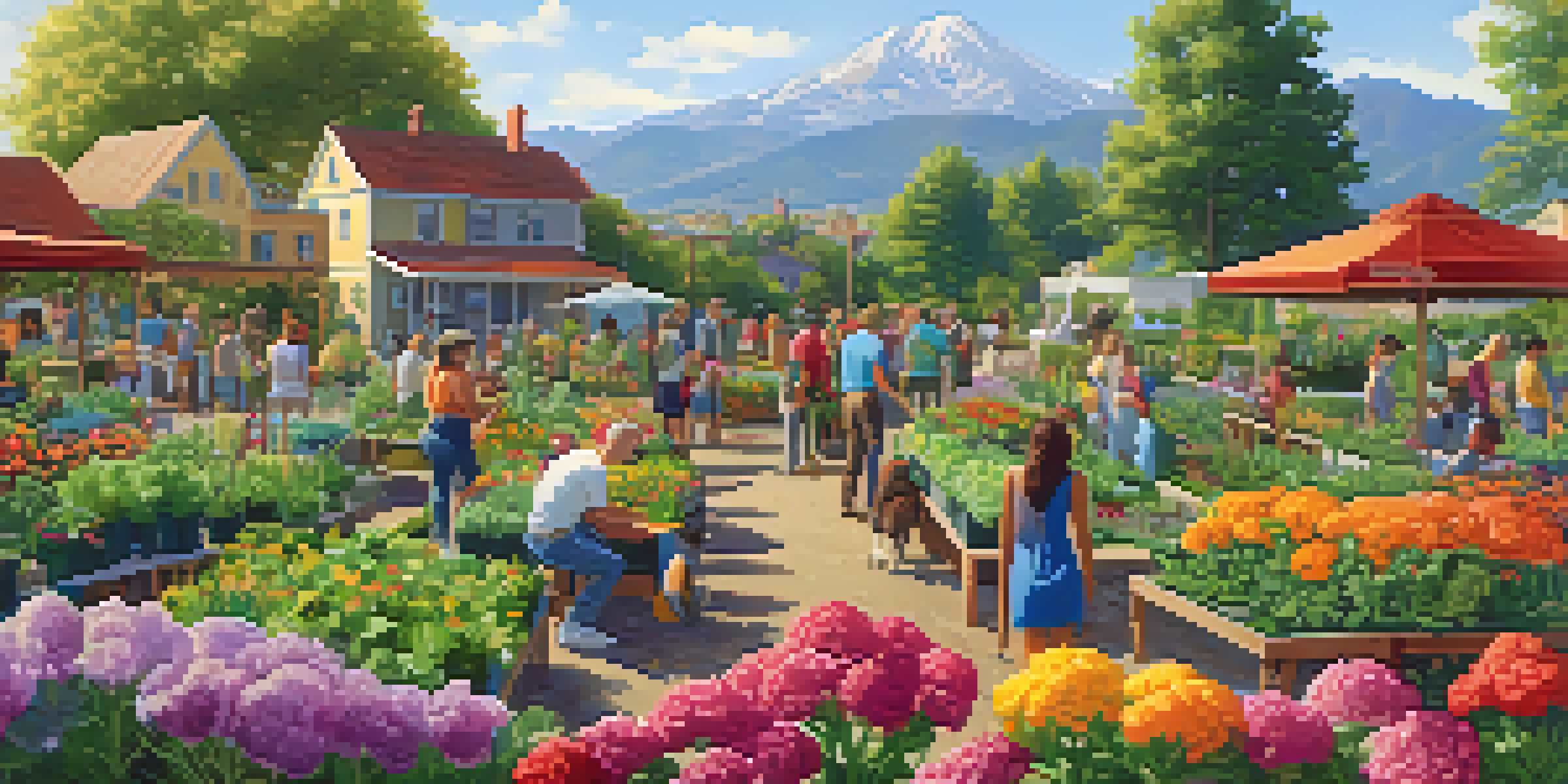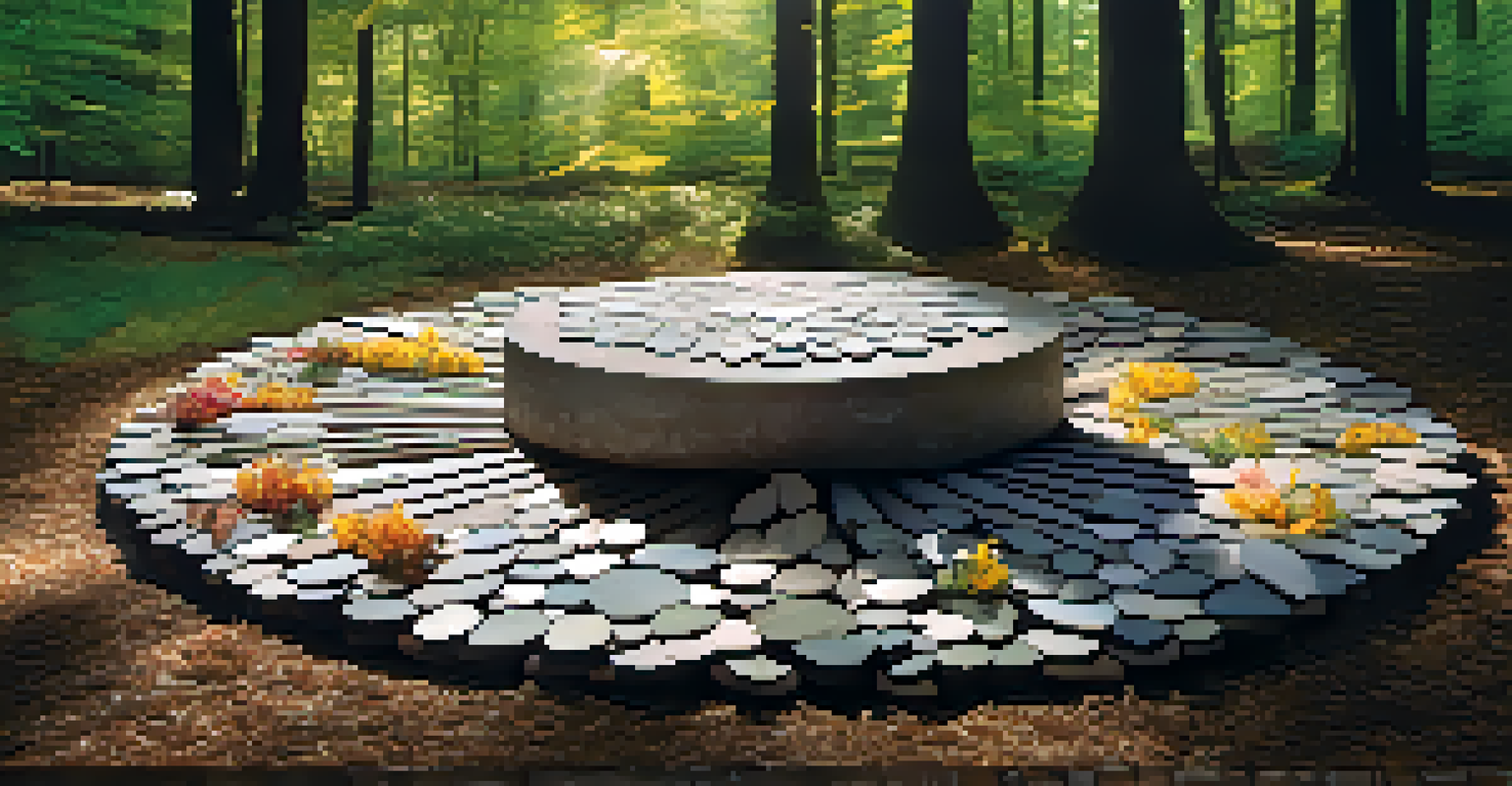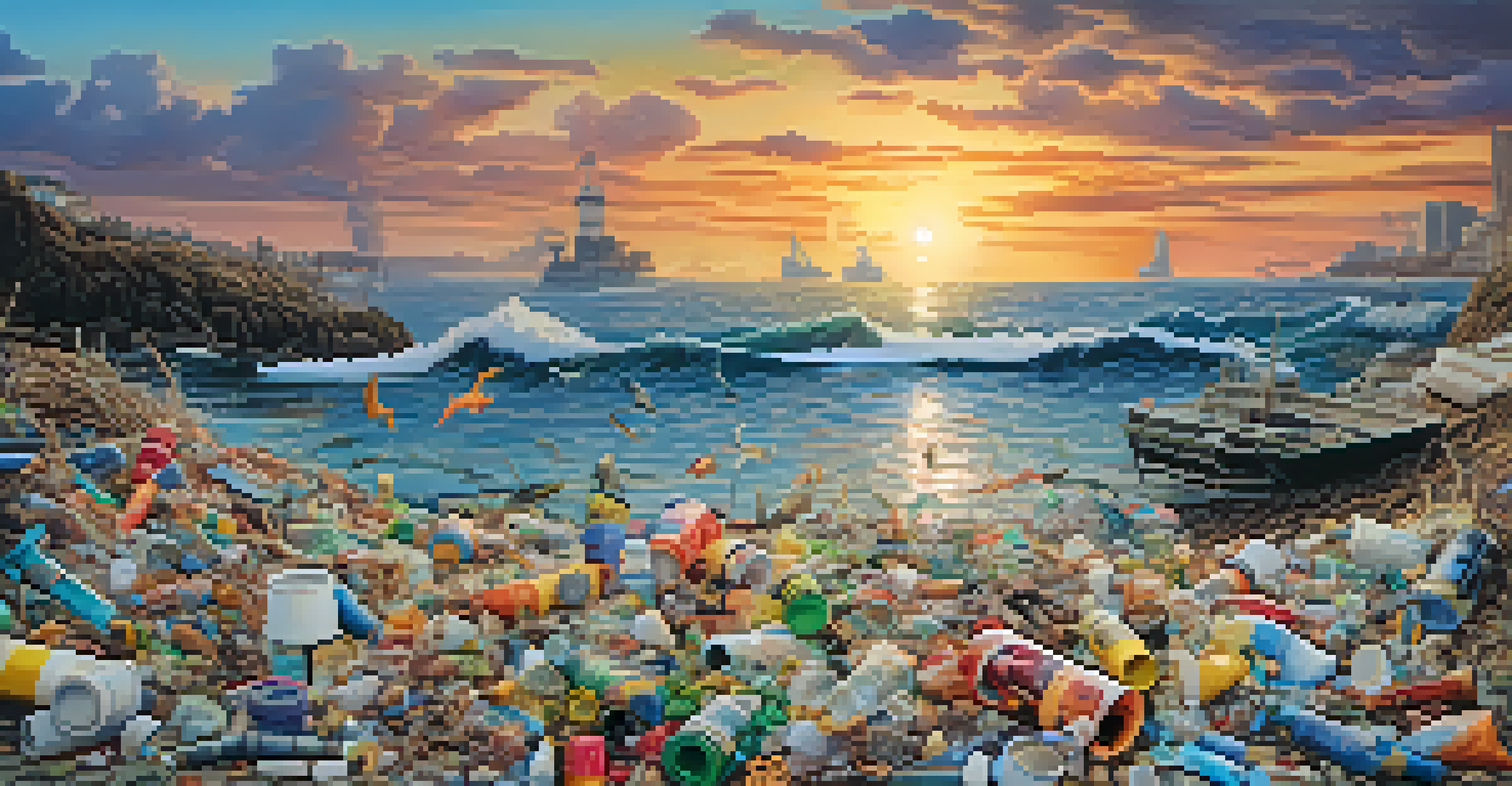Exploring Eco-Art: Nature's Influence on Contemporary Artists

What is Eco-Art and Its Importance?
Eco-Art is a genre that merges artistic expression with environmental consciousness. It serves as a powerful medium for raising awareness about ecological issues, motivating viewers to reflect on their relationship with nature. By integrating natural elements into their work, artists highlight the beauty of the environment while also addressing its fragility.
Art is a way of taking the world into your own hands and making it your own.
The importance of Eco-Art lies in its ability to communicate complex environmental themes in an accessible way. Through visual storytelling, artists can evoke emotions and inspire action, making the often overwhelming topic of climate change more relatable. This art form not only beautifies spaces but also ignites conversations about sustainability and conservation.
Moreover, Eco-Art often encourages a deeper appreciation for nature by showcasing its intricate details and vibrant colors. This appreciation can lead to a greater commitment to protecting our planet, illustrating how art can be a catalyst for change. In essence, Eco-Art transforms passive viewers into active participants in the fight for environmental preservation.
Key Themes in Eco-Art
In Eco-Art, various themes emerge that reflect our connection to nature and the environment. One prevalent theme is the exploration of natural cycles, where artists depict the processes of growth, decay, and regeneration. This focus on cycles can remind us of the interconnectedness of all living things and our role within these systems.

Another significant theme is the critique of human impact on the environment. Many contemporary Eco-Art pieces address pollution, deforestation, and climate change, aiming to provoke thought and spur action. By confronting viewers with the consequences of our actions, these artists challenge us to consider sustainable alternatives.
Eco-Art Merges Art and Ecology
Eco-Art combines artistic expression with environmental awareness to inspire action and appreciation for nature.
Additionally, the theme of harmony between humanity and nature often shines through in Eco-Art. Artists express the idea that we can coexist with the environment in a respectful and sustainable manner. This theme offers hope and encourages viewers to envision a future where art and nature thrive together.
Famous Eco-Art Artists to Know
Several contemporary artists have made significant contributions to Eco-Art, each bringing their unique perspectives and techniques. One notable figure is Andy Goldsworthy, known for his ephemeral sculptures made from natural materials. His work emphasizes the beauty of nature while also highlighting its transitory nature, leaving a lasting impact on those who witness it.
The greatest threat to our planet is the belief that someone else will save it.
Another influential artist is Agnes Meyer-Brandis, who combines art and science to explore the relationship between humans and the cosmos. Her projects often involve collaboration with scientists and encourage viewers to think critically about our place in the universe. This interdisciplinary approach fosters a broader understanding of ecological issues.
Lastly, we have Chris Jordan, whose powerful photographic works address consumerism and waste. By transforming statistics into striking visuals, he makes abstract concepts tangible, urging viewers to confront the reality of their choices. These artists exemplify the diverse ways Eco-Art can engage with and inspire audiences.
Materials and Techniques in Eco-Art
Eco-Art often employs sustainable materials, emphasizing the importance of reducing environmental impact. Artists may use reclaimed wood, biodegradable materials, or even organic pigments to create their works. This choice of materials not only aligns with the ethos of Eco-Art but also encourages consumers to think critically about their own material choices.
Techniques in Eco-Art can vary widely, from installation art that immerses viewers in natural environments to interactive pieces that invite participation. For instance, some artists create community gardens or urban installations that engage the public and promote environmental stewardship. This hands-on approach fosters a sense of ownership and responsibility towards nature.
Community Engagement is Key
Eco-Art fosters community involvement through collaborative projects that promote environmental stewardship and inclusivity.
Moreover, many Eco-Art projects are site-specific, meaning they are designed to respond to the unique characteristics of a particular location. This contextual approach deepens the connection between the artwork and its environment, highlighting the significance of place. By integrating the local landscape into their art, these artists create a dialogue between nature and human creativity.
The Role of Technology in Eco-Art
Technology plays a crucial role in modern Eco-Art, enabling artists to explore new mediums and reach broader audiences. Digital tools, such as 3D printing and virtual reality, allow for innovative expressions of environmental themes. This intersection of art and technology opens up exciting possibilities for engaging with ecological issues.
Additionally, social media platforms serve as powerful tools for Eco-Art advocacy. Artists can share their work, promote environmental awareness, and connect with like-minded individuals globally. This online presence amplifies their message and encourages community involvement, fostering a collective effort towards sustainability.
Furthermore, technology can aid in documenting and analyzing ecological changes. Artists using data visualization techniques can transform complex environmental data into compelling visuals that highlight critical issues. By making data more accessible and understandable, these artists effectively communicate the urgency of environmental action.
Eco-Art and Community Engagement
Community engagement is a vital aspect of Eco-Art, as it often seeks to involve local populations in the creative process. Artists may collaborate with community members to develop projects that reflect their shared experiences and environmental concerns. This participatory approach fosters a sense of belonging and empowers individuals to take an active role in environmental stewardship.
Workshops, public installations, and community gardens are just a few examples of how Eco-Art can bring people together. These initiatives not only promote awareness of ecological issues but also create spaces for dialogue and collaboration. By engaging with the community, artists can inspire collective action towards sustainability.
Technology Enhances Eco-Art
Modern technology empowers Eco-Art by enabling innovative expressions and expanding outreach for ecological issues.
Moreover, Eco-Art projects can serve as a platform for marginalized voices, amplifying narratives that are often overlooked. By highlighting diverse perspectives, these projects enrich the conversation around environmental justice and encourage inclusivity. In this way, Eco-Art becomes a powerful tool for social change as well as environmental awareness.
The Future of Eco-Art
As environmental challenges continue to escalate, the future of Eco-Art looks promising and necessary. Artists are likely to push boundaries, exploring innovative techniques and materials that prioritize sustainability. This evolution will not only enhance the aesthetic of Eco-Art but also deepen its impact on society.
The growing recognition of the importance of mental health and well-being is also shaping the future of Eco-Art. Artists may increasingly focus on creating immersive, nature-inspired experiences that promote healing and mindfulness. By fostering a connection to nature, these projects can offer respite in our fast-paced lives.

Finally, as global awareness of environmental issues increases, Eco-Art will likely gain even more visibility. Artists will continue to play a crucial role in shaping public discourse and driving change, reminding us of our responsibility to protect the planet. The future of Eco-Art is a canvas waiting to be filled with creativity, hope, and action.